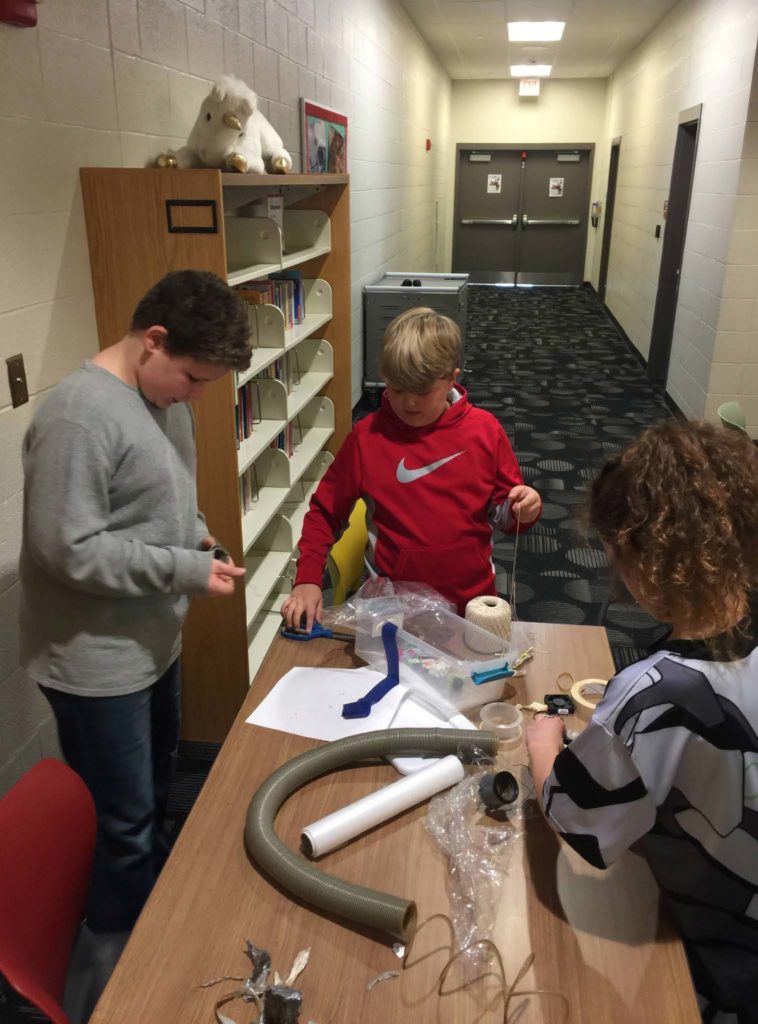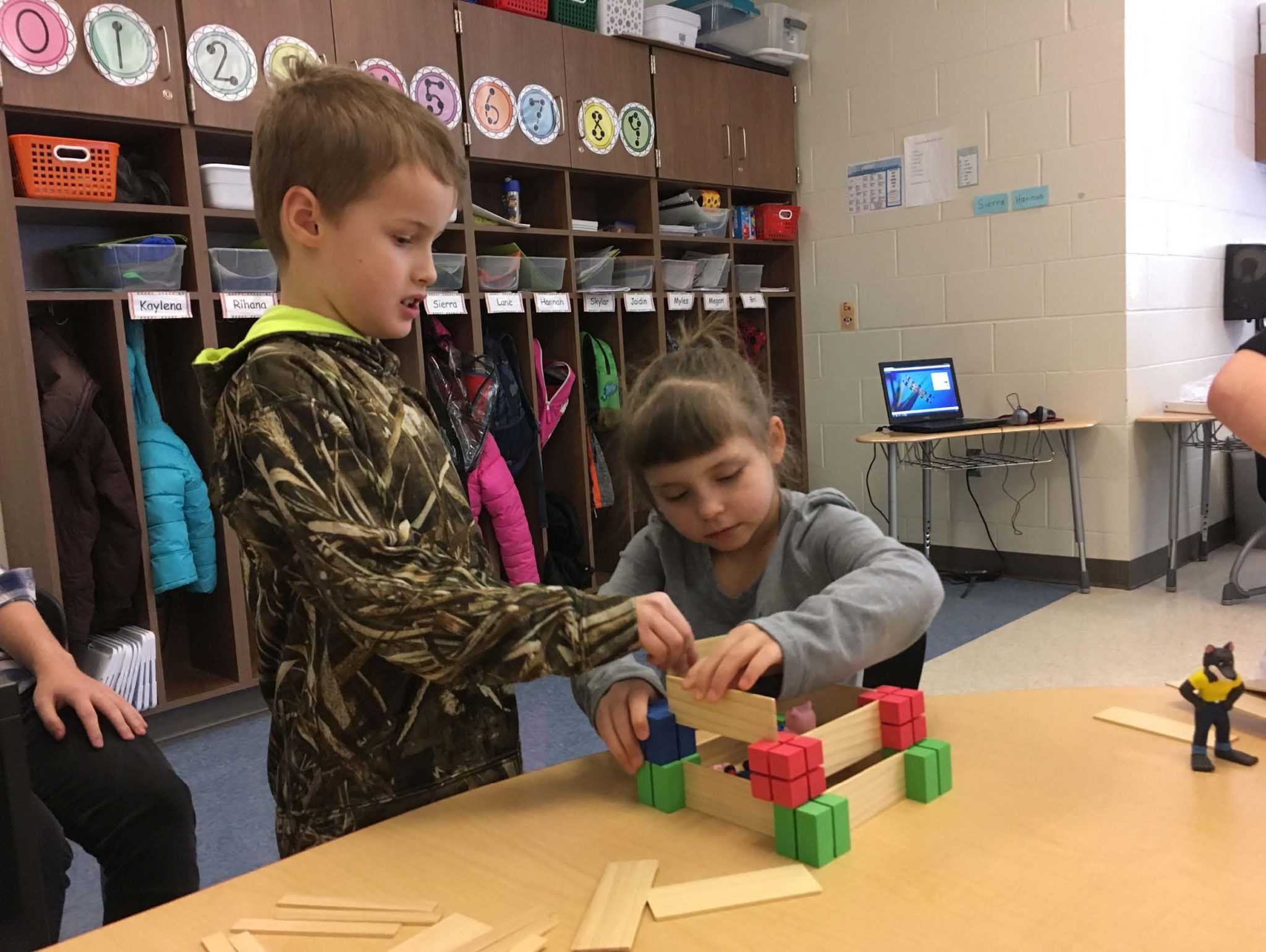Making real world connections to the lessons she teaches is a goal of the winner of the 2021 Excellence in STEM Teaching Award.
 Tammy Laughlin, media specialist at Circleville Elementary School, recently won the award from the Ohio STEM Learning Network. Laughlin teaches K-5 STEM/Technology. Examples of her lessons include artificial intelligence in robots, the Great Pacific Garbage Patch, bridge design and construction, and 3D printing, all while using the engineering and design process. Her educational approach is centered on student needs and interests, and she seeks to convey that there are multiple ways to accomplish a given task and demonstrate learning. We contacted her to find out more about her teaching philosophy and accomplishments in the classroom:
Tammy Laughlin, media specialist at Circleville Elementary School, recently won the award from the Ohio STEM Learning Network. Laughlin teaches K-5 STEM/Technology. Examples of her lessons include artificial intelligence in robots, the Great Pacific Garbage Patch, bridge design and construction, and 3D printing, all while using the engineering and design process. Her educational approach is centered on student needs and interests, and she seeks to convey that there are multiple ways to accomplish a given task and demonstrate learning. We contacted her to find out more about her teaching philosophy and accomplishments in the classroom:
Q: Tell us about your school and the courses that you teach. What is your teaching philosophy, and how do you put it into practice in the classroom?
A: Circleville Elementary is a K-5 building, with approximately 1,200 students. I teach the STEM/computer classes for all grade levels, and I want students to learn how to be critical thinkers as well as learn from their mistakes.
In my STEM classroom, I am constantly reminding students that is OK if they fail, but it is not OK to quit! Students learn how to apply the engineering and design process to formulate possible solutions and, if necessary, come up with alternative solutions.
 |
 |
 |
Q: Can you give us examples of your favorite lessons, what they involve and their goal? In general, what sets your lessons apart from those of other STEM educators?
A: My favorite part of teaching STEM is that I have the opportunity to incorporate my background as a science teacher and teach a wide variety of topics. I love teaching coding. Students get so excited when they complete a coding project and are able to share it with other students in the classroom or their adults at home.
I am always amazed at how creative they continue to be when students start basic coding in kindergarten. By the time they are in fourth grade, they are coding their own games, interactive stories and cartoons. This year, students in fifth grade were able to engineer desktop catapults with 3D pens and then create their own designs using our 3D printer.

Q: In your award application, you state, “In my STEM curriculum students are free to express themselves using the multiple intelligences that best fit their needs. I don’t want to stifle them.” Can you explain that statement, giving examples from the classroom?
A: Students have different capabilities and interests. I try to find multiple ways students can complete an assignment or project. I want to allow students to build off of their own strengths.
For instance, when we were doing coding projects, students could choose from a variety of levels and themes. Some students were more advanced and wrote their own line code, while other students had chosen to use block coding to complete the project.
Q: You also state in your application that you “try to find a real world connection to what I am teaching.” Why is this important, and how do you do it?
A: When there is a real-world connection, students can see how their learning can be applied to solve a problem or meet a need. I think this is important for students to learn as it validates what they are learning.
When students were learning about 3D printing, they also learned how 3D printing is being used to help people and solve problems. When they are coding, we relate a lot of what they are learning to the games they enjoy or the apps they like. Students learned about how engineers and architects use blueprints and design to create things. They then created their own blueprints on the computer and built their designs using our STEM carts.
 |
 |
 |
Q: In that vein, do you bring STEM experts from the real world into the classroom to speak to your students? Why is this important?
A: Before the pandemic, I did have people come to the school. I worked with the talented and gifted teacher to bring in engineers from Cincinnati. These experts talked with students about artificial intelligence and robotics. It was great to see the students interacting with them, especially when the students were able to share what they had learned. It was a proud moment for me to see the students’ learning come full circle.
This is so important because students were able to see the correlation between jobs they might one day have and why what they are doing in the classroom is so important. Since the pandemic, I have found some virtual experiences that could be shared with students so they could get STEM experts to share their ideas and experiences.
Q: What have your years of experience, and your students, taught you about teaching?
A: I love my job as a STEM teacher. With the state’s emphasis on more testing, students have developed so much anxiety about getting the wrong answers or failing. I am teaching them that it is OK to be wrong and to use their trial and error as an opportunity to learn – to look at what didn’t work and figure out a new approach and try again. That is what they are going to face in life! I want them to feel free to question things, to try to formulate solutions and to collaborate with others while doing so.
Q: Can you elaborate on your statement: “I am finding that students who struggle in traditional classroom subjects excel in my class.” Why do you think that is?
A: Students in my class have the opportunity to incorporate their own interests. If they have a high interest in something, there is an internal push to want to learn.
One student always comes to mind when I try to explain this. This student was a struggling reader and a discipline problem in the regular classroom. One day, at the end of my class, I approached their classroom teacher to share what had transpired that day. The teacher was amazed when I shared that this student was working with graphing coordinates to draw their own character and code it to venture into different realms they had created on their own.
This student went beyond the basic requirements of the assignment and had pushed themselves beyond my expectations because they had the interest and the desire to learn. I think that students excel in my class because they have the freedom to incorporate their own interests.
Q: How has the past academic year, grappling with pandemic restrictions, changed your teaching? What, if anything, will you take from that year as you move forward?
A: Because students couldn’t share resources, there were a lot of things I wasn’t able to use this year with students. I wasn’t able to use a lot of the hands-on resources I had used in the past. I had to rethink lessons and incorporate more open-ended projects. I wanted students to be able to find things around the house they could reuse to create things with. I want to continue this with them. Students were so inventive and so excited to share with me what they had done.
I was able to work more closely with the other specialists in the building, and I want that to continue. We have a great working relationship and are able to work together to provide great learning opportunities for students.
I am really looking forward to using the hands-on resources I have with students. Every year I work to obtain grants to build a great collection of learning materials for students that has significantly expanded my classroom to include KUBO robots, littleBits and Makey Makeys.
I can’t wait to see what the students are going to create and am thankful for groups such as our Circleville City School Foundation for their support of my classroom through grant opportunities!
 |
 |
 |
Q: What advice would you give other STEM educators?
A: I think we can all benefit from continuing to build a network of STEM educators whom we can share ideas with. That is where I have learned the most. I take ideas back to my classroom and tweak them.
As far as students are concerned, my advice is to be ready to learn from them at any moment. I am amazed when my students take the lead, and I learn from them as much as they learn from me!
Q: Is there anything else you would like to share about STEM education or teaching in general?
A: I just finished my 20th year in education, and every year I have learned something new. Students are sponges, and they are soaking up what they are learning. When they are given the opportunity to do something they enjoy, the results are amazing! I think that teachers are striving to find ways to incorporate that into their lessons. When we do this, I know students will benefit from that opportunity!